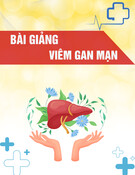
TẠP CHÍ Y häc viÖt nam tẬP 543 - th¸ng 10 - sè 3 - 2024
349
thường ở người Việt Nam trưởng thành và sự
thay đổi của các số đo này giữa hai giới, sự khác
biệt về đậm độ nhu mô tụy giữa người bình
thường và người có bệnh đái tháo đường. Từ đó
có thể hỗ trợ trong việc phát hiện những bất
thường của tụy nhằm góp phần giúp các nhà lâm
sàng có thể chẩn đoán đúng và đưa ra hướng
điều trị kịp thời cho bệnh nhân.
TÀI LIỆU THAM KHẢO
1. Quantitative determination of pancreas size
using anatomical landmarks and its clinical
relevance: A systematic literature review (2018) |
Steve V. DeSouza | 27 Citations. Accessed August
26, 2024. https://typeset.io/papers/quantitative-
determination-of-pancreas-size-using-anatomical-
58yy5im4ua
2. Banks P. A., Bollen T. L., Dervenis C.,
Gooszen H. G., Johnson C. D., Sarr M. G., et
al. (2013), “Classification of Acute Pancreatitis—
2012: Revision of the Atlanta Classification and
Definitions by International Consensus”. Gut;
62(1): P. 102-11.
3. Moss AA, Kressel HY. Computed tomography of
the pancreas. Digest Dis Sci. 1977;22(11):1018-
1027. doi:10.1007/BF01076205
4. Haaga JR, Alfidi RJ, Zelch MG, et al. Computed
Tomography of the Pancreas. Radiology.
1976;120(3):589-595. doi:10.1148/120.3.589
5. Heuck A, Maubach PA, Reiser M, et al. Age-
related morphology of the normal pancreas on
computed tomography. Gastrointest Radiol.
1987;12(1):18-22. doi:10.1007/BF01885094
6. Thảo PTH, Hải DV, Đức VT, Hoàng TM. Khảo
sát kích thước và đậm độ của tụy bình thường ở
người việt nam trưởng thành trên x quang cắt lớp
vi tính. Published online 2015.
7. Li L, Wang S, Wang F, Huang G ning, Zhang
D, Wang G xian. Normal pancreatic volume
assessment using abdominal computed
tomography volumetry. Medicine (Baltimore).
2021;100(34):e27096.
doi:10.1097/MD.0000000000027096
8. Y T, S K. Age-dependent decline in parenchymal
perfusion in the normal human pancreas:
measurement by dynamic computed tomography.
PubMed. Accessed August 21, 2024.
https://pubmed.ncbi.nlm.nih.gov/9700945/
9. Saisho Y, Butler AE, Meier JJ, et al. Pancreas
volumes in humans from birth to age one
hundred taking into account sex, obesity, and
presence of type‐2 diabetes. Clinical Anatomy.
2007;20(8):933-942. doi:10.1002/ca.20543
10.Olsen TS. Lipomatosis of the pancreas in autopsy
material and its relation to age and overweight.
Acta Pathol Microbiol Scand A. 1978;86A(5):367-
373. doi:10.1111/j.1699-0463.1978.tb02058.x
KẾT QUẢ BẢO TỒN TỦY BẰNG BIODENTINE
TRÊN RĂNG VIÊM TỦY KHÔNG HỒI PHỤC
Lê Thu Hà1,2, Trịnh Thị Thái Hà1, Lê Hồng Vân2
TÓM TẮT87
Mục tiêu: Đánh giá kết quả điều trị bảo tồn tủy
bằng Biodentine trên răng viêm tủy không hồi phục.
Đối tượng và phương pháp nghiên cứu: Nghiên
cứu can thiệp lâm sàng không đối chứng được thực
hiện trên 35 răng có chẩn đoán viêm tủy không hồi
phục được chỉ định bảo tồn tủy bằng Biodentine. Kết
quả: Mức độ đau (theo thang điểm VAS) trước điều
trị là 7.71, giảm dần sau điều trị 48h, 1 tháng, 3 tháng
lần lượt là 1.2, 0.89 và 0.53, giảm mạnh nhất tại thời
điểm 48h. Sau điều trị 1 tháng, tỷ lệ thành công là
34/35 răng (97.1%) và có duy nhất 1/35 răng (2.9%)
điều trị thất bại. Sau điều trị 3 tháng, tỷ lệ thành công
32/35 răng (91.4%) và có 3/35 răng (8,6%) điều trị
thất bại. Kết luận: Tỷ lệ điều trị thành công của bảo
tồn tủy bằng Biodentine trên răng viêm tủy không hồi
phục sau 3 tháng là 91.4%.
Từ khoá:
Bảo tồn tủy,
viêm tủy không hồi phục, Biodentine.
1Trường Đại học Y Hà Nội
2Bệnh viện Răng Hàm Mặt TW Hà Nội
Chịu trách nhiệm chính: Lê Thu Hà
Email: thuharhm86@gmail.com
Ngày nhận bài: 5.8.2024
Ngày phản biện khoa học: 16.9.2024
Ngày duyệt bài: 10.10.2024
SUMMARY
EVALUATION OF VITAL PULP THERAPY
USING BIODENTINE IN TEETH WITH
IRREVERSIBLE PULPITIS
Objective: The aim of this study was to evaluate
the effectiveness of vital pulp therapy using Biodentine
in irreversible pulpitis teeth. Subjects and methods:
A non-controlled clinical study was conducted on 35
teeth diagnosed with irreversible pulpitis, which were
indicated for vital pulp therapy using Biodentine.
Results: The average pain level (according to the
VAS scale) was 7.71 prior to treatment, gradually
decreasing after the procedure at 48 hours, 1 month,
and 3 months to 1.2, 0.89, and 0.53, respectively,
with the most significant reduction noted at 48 hours.
After one month of follow-up, the success rate was
97.1%, while only 1/35 teeth (2.9%) classified as
failure. After three months of follow-up, the success
rate was 32/35 teeth (91.4%), with 3/35 teeth (8.6%)
classified as failures. Conclusion: The success rate of
vital pulp therapy using Biodentine in teeth with
irreversible pulpitis after 3 months is 91.4%.
Keywords:
Vital pulp therapy, Irreversible
pulpitis, Biodentine








































